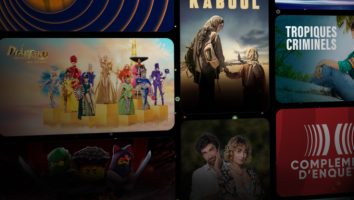With more than 500,000 iPhone and 200,000 Android apps available for download at the tap of a finger, it’s clear that there’s no shortage of mobile entertainment options for kids. Yet with this massive wave of content development, the lines between what constitutes an app, an eBook or an enhanced eBook are blurring, especially when it comes to children’s publishing.
There are currently no set standards issued to US publishers and developers when it comes to digitizing book content. Scholastic, for instance, has recently teamed with year-old developer Ruckus to create a new imprint whose products run the gamut from fully interactive apps, enhanced eBooks and standard eBooks to traditional books printed on paper.
“The labels for all of these buckets are being redefined,” says Jason Root, chief content officer at Ruckus. The Connecticut-based company views most of its digital products as interactive storybooks, but the more interactive they are, the more they are marketed and sold as apps. For instance, Ruckus’ recently produced pop-up book Spot the Dot by author David Carter—which encourages preschoolers to find a red dot within a nested play space—is classified as an interactive storybook app. Digital products with limited interactivity, such as touch-activated animations, are deemed to be enhanced eBooks, and the company’s straight-up eBooks are essentially scans of existing printed books.
“There are different elements involved in creating an app versus an eBook, and there are different categories of apps and licenses that you can gather,” Root says. “There is a spectrum and it keeps changing, and that’s what makes it such an evolving landscape.”
Unlike Scholastic’s ongoing venture into apps, publishing giant Simon & Schuster sees itself evolving with the space through eBooks. The company makes each of its picture books—when it has the applicable licensing rights—available as a digital eBook, and its in-house team currently develops for all major platforms, including the Barnes & Noble Nook Color, Amazon Kindle and Kindle Fire, and the iPad.
“At the beginning of 2011, the only place you could fully experience a digital picture book was the iPad. But now the Nook Color and the Amazon Fire can offer that experience, too,” says Mara Anastas, VP and deputy publisher at Simon & Schuster Children’s Publishing. “We’re not in the business of apps aside from using them for marketing vehicles,” she says. “We’re trading things for the electronic bookstore, and those kinds of enhancements don’t work on an eBookstore platform.”
Still, Anastas says eBook production is far from cheap, as digitizing all of the artwork is an arduous process. “There is an ongoing perception that eBooks are free to make, but that’s really not the case,” she says. In fact, her division is also spending on acquiring licenses, such as Ian Falconer’s Olivia, which has inspired six eBooks. Anastas adds that licenses are an integral part of the company’s digital publishing strategy in 2012 due to their brand recognition and the resulting titles’ reasonable price points, which run from US$5.99 to US$12.99 apiece.
Licensed content is also a fundamental part of California-based zuuka’s business plan. The developer entered the children’s app market three years ago with its iStoryTime platform, which now supports more than 130 book apps in the iTunes App Store.
Co-founder Graham Farrar believes third-party developers have major opportunities today to take on licenses and create original IP for large publishers and other companies.
“DreamWorks has as much interest in making kids apps as they do in making stuffed animals,” Farrar says. (As far as royalties go, he says standard licensing deals in digital publishing currently yield rates between 10% and 25% for licensors.)
And emerging tablets like the Nook and Kindle Fire are only increasing opportunities for developers like zuuka, which is growing its library for the two-month-old Nook Tablet with seven apps already out of the gate. These devices are also muddying the waters when it comes to terminology. “The Nook presents its products, whether they are apps or eBooks, in the same way. Our Smurfs app, for instance, is featured as an eBook,” Farrar says. But he contends these sorts of distinctions are for developers to decipher, not consumers. “People see no difference between an eBook and an app. Consumers only care about function.”





















